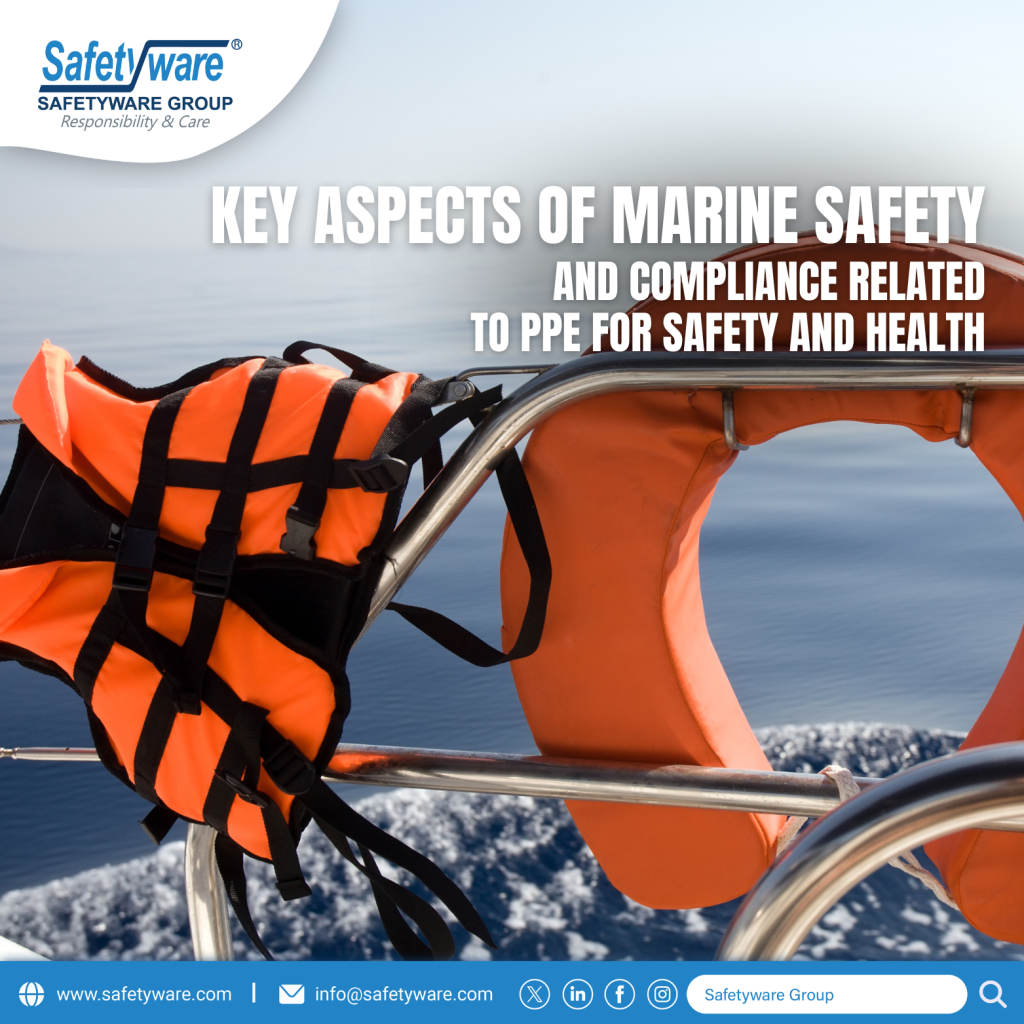Personal Protective Equipment (PPE) is essential in the maritime industry to protect workers from various hazards and ensure their safety and health. Here are key aspects of marine safety and compliance related to PPE for safety and health:

1. Hazard Assessment and PPE Selection:
- Risk Identification: Conduct a thorough hazard assessment to identify potential risks and hazards specific to maritime operations, such as slips, trips, falls, chemical exposure, and noise.
- PPE Selection: Choose appropriate PPE based on the identified hazards, ensuring that it provides adequate protection against the risks present in the marine environment.
2. Compliance with Regulations:
- Regulatory Standards: Ensure that all PPE meets relevant regulatory standards and certifications, such as those set by the International Maritime Organization (IMO), Occupational Safety and Health Administration (OSHA), and other governing bodies.
- SOLAS Compliance: Comply with SOLAS regulations that mandate the use of specific PPE on vessels to protect crew members from various risks, including life jackets, helmets, safety shoes, and protective clothing.
3. Training and Education:
- Proper Use: Provide comprehensive training to workers on the proper selection, use, maintenance, and limitations of PPE to ensure they understand how to use it effectively.
- Fit Testing: Conduct fit testing for PPE such as respirators to ensure a proper seal and optimal protection against respiratory hazards.
4. Maintenance and Inspection:
- Regular Inspections: Implement a regular inspection schedule for PPE to check for wear and tear, damage, or defects that could compromise its effectiveness.
- Maintenance Procedures: Establish proper maintenance procedures for PPE, including cleaning, disinfection, storage, and replacement of worn-out or damaged equipment.
5. Emergency Response Preparedness:
- Emergency Procedures: Include PPE requirements in emergency response plans and drills to ensure that workers know how to quickly access and use their protective gear during emergencies.
- Emergency Equipment: Ensure that emergency response equipment, such as life jackets, immersion suits, and personal flotation devices, is readily available and in good working condition.
6. Record-Keeping and Documentation:
- Training Records: Maintain detailed records of PPE training sessions provided to workers, including the topics covered, dates of training, and participants involved.
- Inspection Logs: Keep records of PPE inspections, maintenance activities, repairs, and replacements to track the condition of equipment and ensure compliance with safety standards.
By addressing these key aspects of marine safety and compliance related to PPE for safety and health, maritime organizations can enhance workplace safety, protect the health of their workers, and ensure compliance with regulations to create a safer and healthier working environment at sea.
